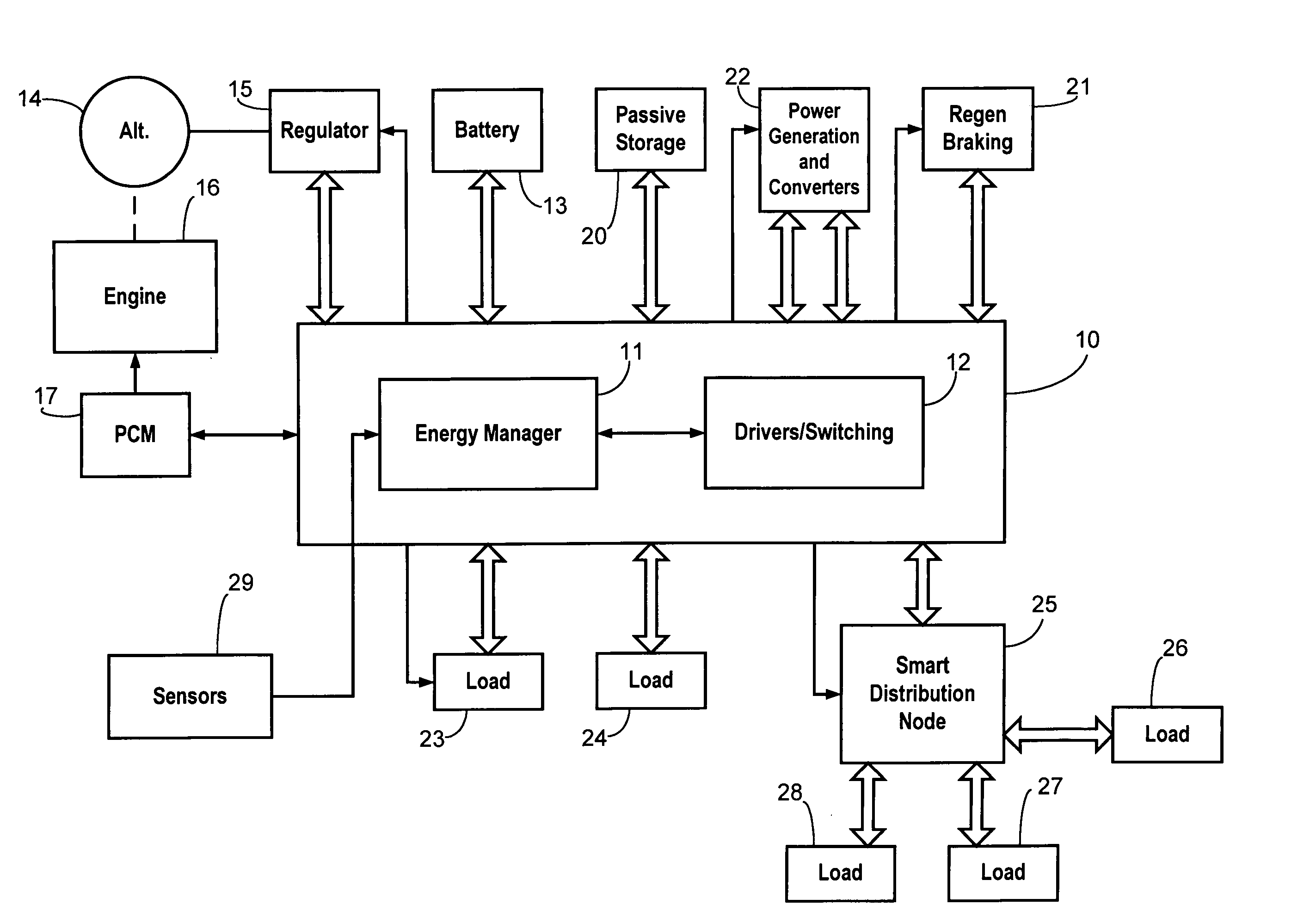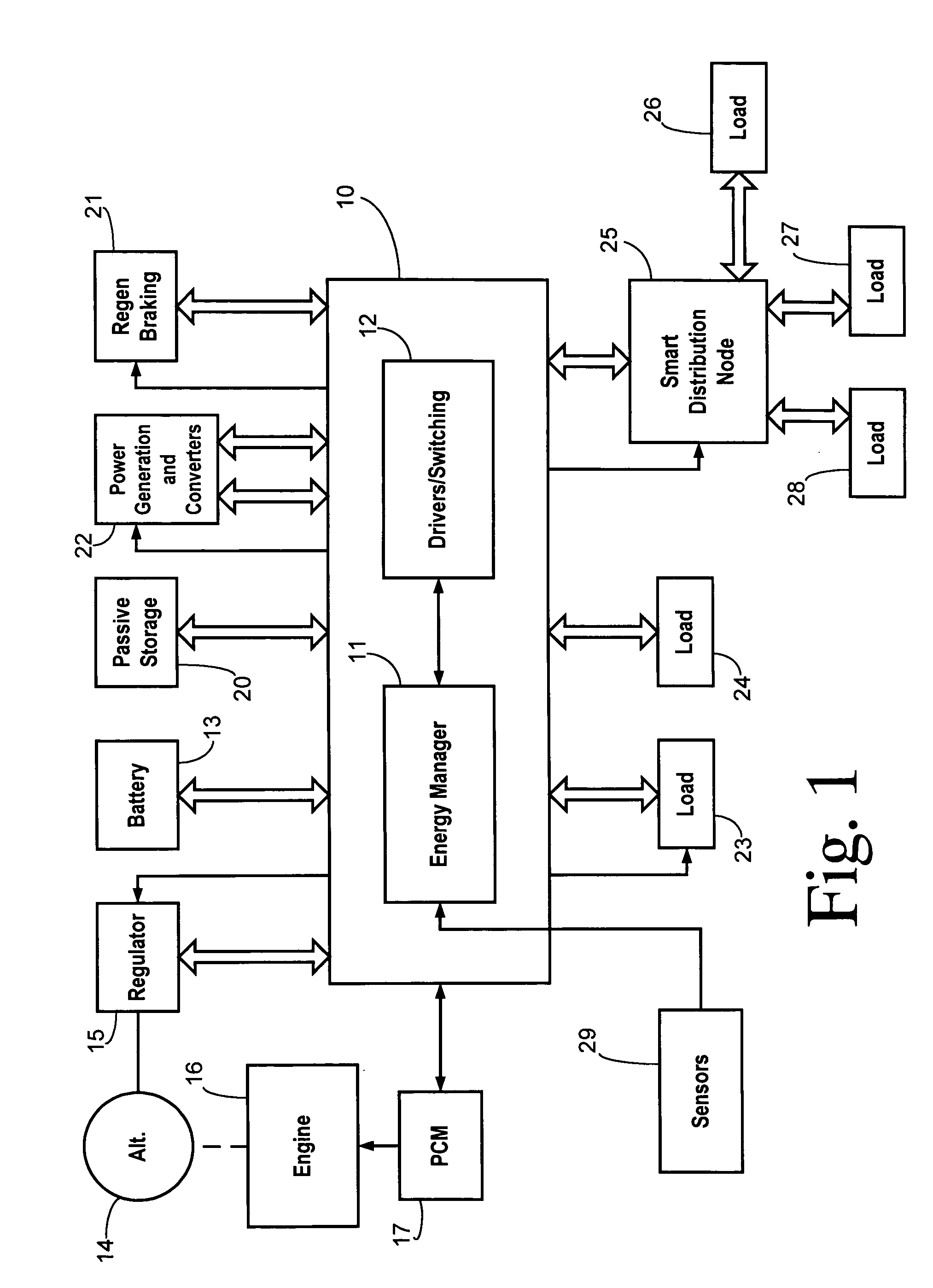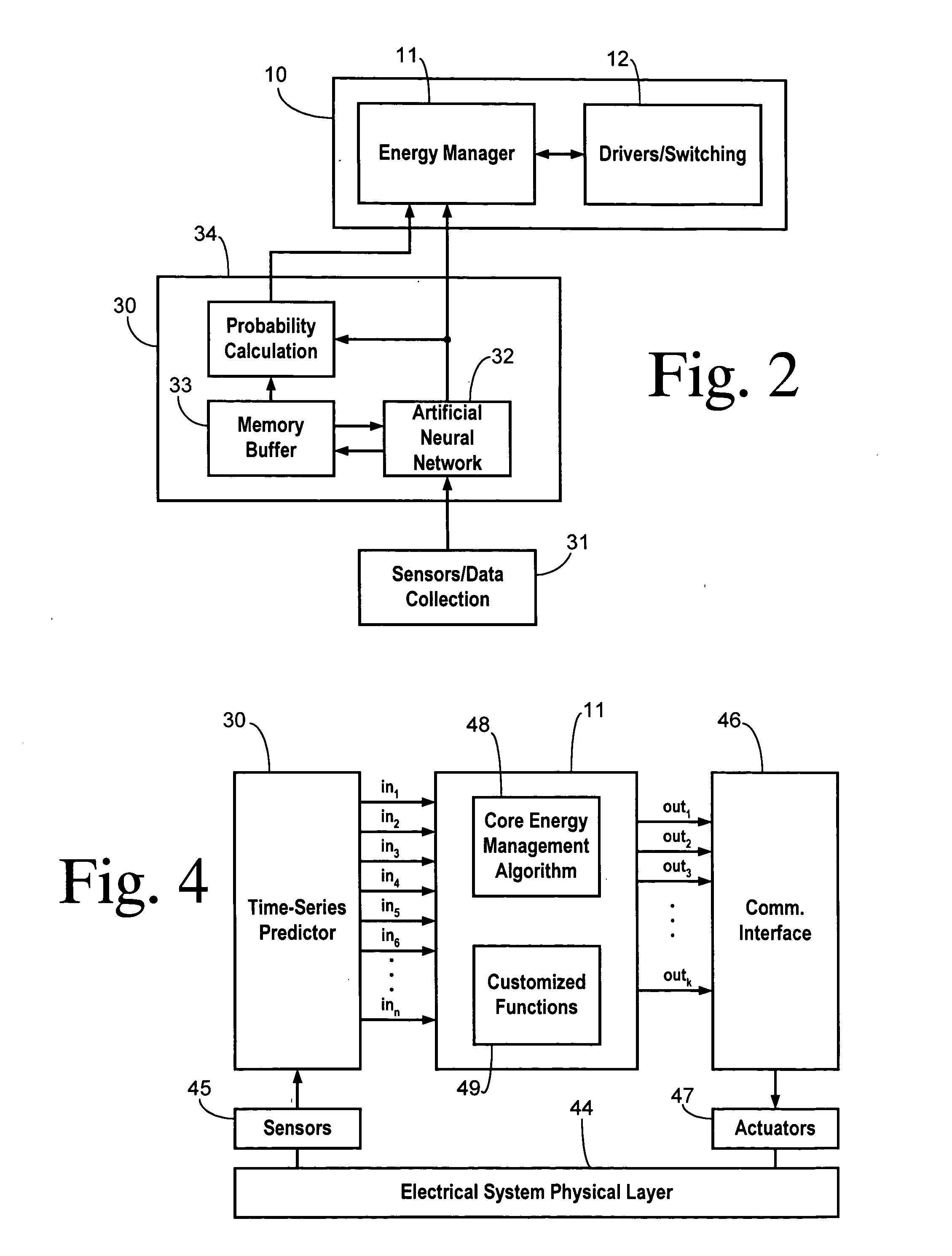Vehicle energy management system using prognostics
a technology of vehicle energy management and prognostic, applied in adaptive control, instruments, tractors, etc., can solve the problems of increasing increasing the complexity of electrical systems in modem vehicles, and increasing the complexity of energy management strategies. achieve the effect of avoiding degraded electrical system performan
- Summary
- Abstract
- Description
- Claims
- Application Information
AI Technical Summary
Benefits of technology
Problems solved by technology
Method used
Image
Examples
Embodiment Construction
[0017] A typical electrical energy, power, and load management (EM) system controls power generation, storage, and consumption according to different operational states of a vehicle. The EM strategy optimizes the generation, distribution, and conversion of power in the vehicle electrical system as a function of electrical capacity / usage balancing, health status of electrical system components, and priority definitions for basic electrical system functions. Electrical system parameters that are monitored and controlled include load currents, battery state of charge (SOC), state of health (SOH), power generation capabilities of multiple sources (e.g., alternator and fuel cell), energy storage capabilities (e.g., ultracapacitors, regenerative braking), and power conversion capabilities (e.g., dc / dc and dc / ac converters). The controlled systems can include dual voltage architectures (e.g., 42 / 14 volt systems) and dual battery systems.
[0018] An EM system typically has the capability of ...
PUM
 Login to View More
Login to View More Abstract
Description
Claims
Application Information
 Login to View More
Login to View More - R&D
- Intellectual Property
- Life Sciences
- Materials
- Tech Scout
- Unparalleled Data Quality
- Higher Quality Content
- 60% Fewer Hallucinations
Browse by: Latest US Patents, China's latest patents, Technical Efficacy Thesaurus, Application Domain, Technology Topic, Popular Technical Reports.
© 2025 PatSnap. All rights reserved.Legal|Privacy policy|Modern Slavery Act Transparency Statement|Sitemap|About US| Contact US: help@patsnap.com



